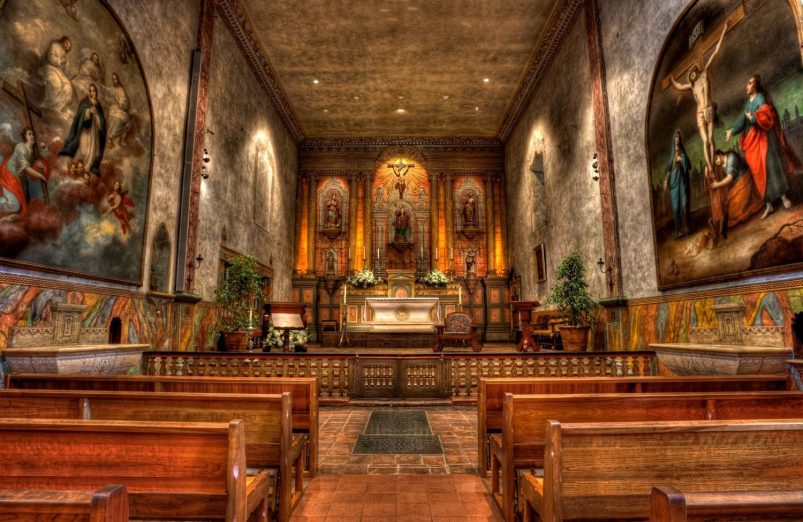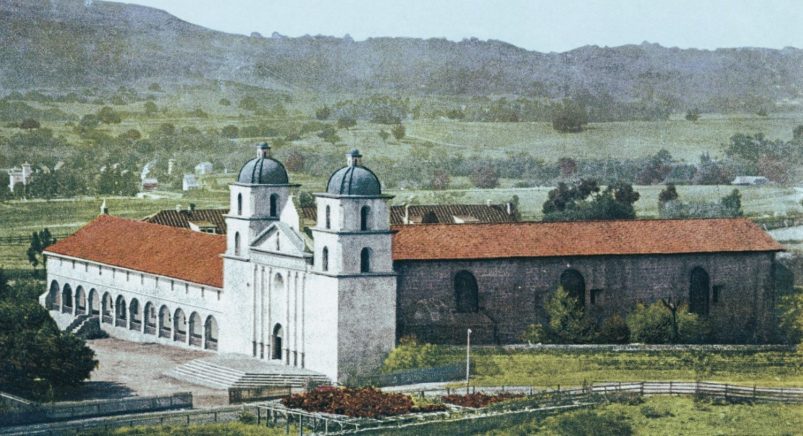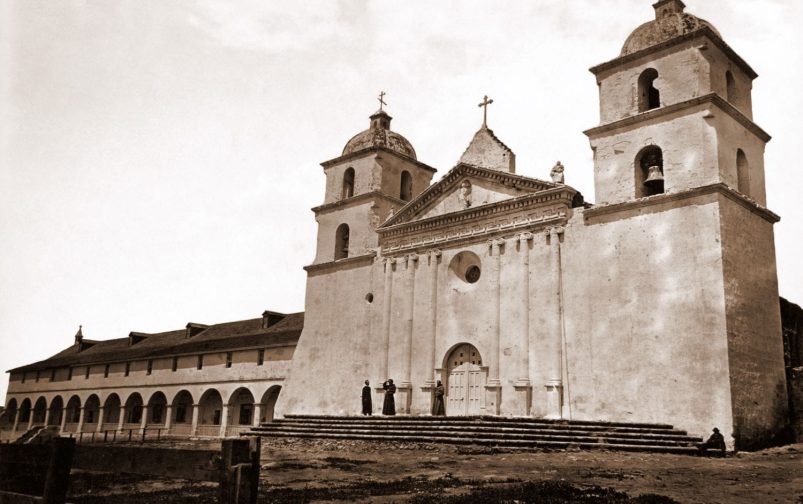The “Queen of the Missions”. On a spring day in 1782, the Padre Presidente of the California Missions, Fr. Junípero Serra, and the Spanish Governor de Neve founded (as Serra supposed) the Presidio and Mission of Santa Barbara. Today, the Mission Archives preserve the record book of the Mission that the earnest Padre carefully started on that day. Yet, the arbitrary Governor would not allow the actual establishment of the mission. A frustrated Father Serra retired to Carmel, where he died two years later on August 28, 1784. Father Fermín Lasuén, one of the missionaries who had arrived with Serra at San Diego, became the new Padre Presidente and the actual Founder of Mission Santa Barbara on December 4, 1786.
Difficult years were over, and the “Golden Age” of the California Missions was dawning. Launched as it was at the beginning of such prosperous times, Santa Barbara Mission had the greatest of good fortune during all its early years. An early church was destroyed in the earthquake of 1812, but a new and more impressive edifice was already needed.

Santa Barbara’s mission church, with its world-famous twin bell towers, boasts a stone facade patterned after an ancient Latin temple in pre-Christian Rome. The design is traced back to a book brought to California by the Franciscans, a Spanish reprint of an architecture book published in 27 B.C. This beautiful new church stood firm for over a hundred years until suffering severe damage in an earthquake in 1925. Two years of rebuilding and later restoration work have allowed us to maintain its original appearance.
The Indians at Santa Barbara, more intelligent and cooperative than some, quickly made the new mission self-sustaining. In 1818, about 150 neophytes were armed and trained to reinforce the presidio guard against a threatened attack by the French pirate, Bouchard.
Of all the California missions, only lovely Santa Barbara escaped the exploitation inflicted by secular elements at other locations, helped by the joint residency of the last Padre Presidente and the first Bishop of the Californias. When both men died in 1846, an eager Pio Pico rushed in for the coup but he was too late, for California became a United States Territory.
Having been occupied by the Franciscans from the day of the founding until the present, Santa Barbara’s interior appearance has changed little, due to continuous loving care. But on the outside, gone are the mud huts of the Indian village. In their stead are green lawns, and a beautiful rose garden, beyond which the modern city stretches to the blue Pacific. The present stone church, with its familiar twin bell towers, is the fourth to stand on the site counting the first rough, temporary chapel.

Santa Barbara is the only mission in the California chain that remained under the control of the Franciscans without interruption from the day of its founding until the present time. All others were abandoned one by one after the Mexican secularization decrees robbed the missions of their lands and control over the Indians.
Early in the 19th century, the mission had more than 1,700 Indian neophytes living in a village of 250 adobe houses. More adaptable and energetic than some, the Santa Barbara Indians soon helped to make the mission self-sustaining. At one time, 150 neophytes were armed and drilled to reinforce the Spanish presidio guard. After secularization, the mission became a parish church, first Mexican and later American.
